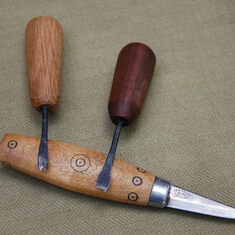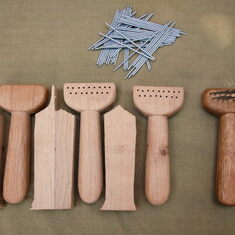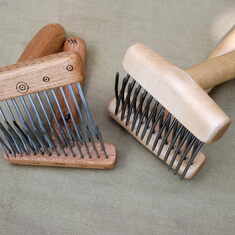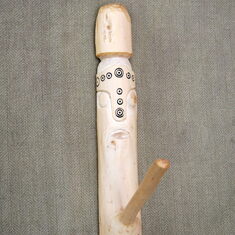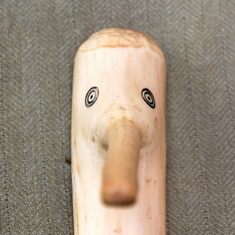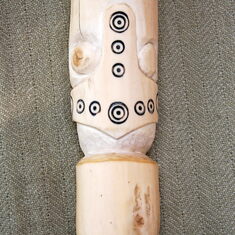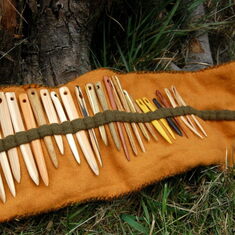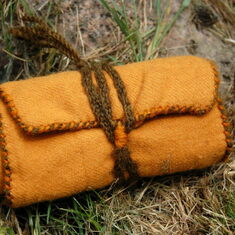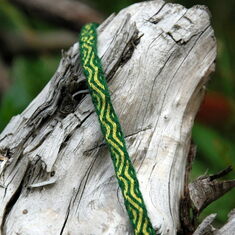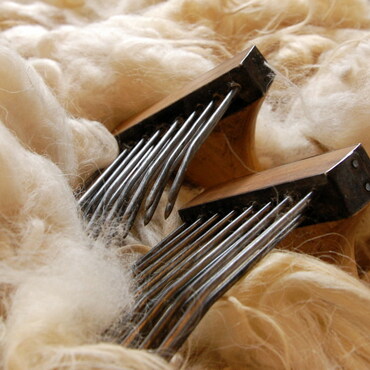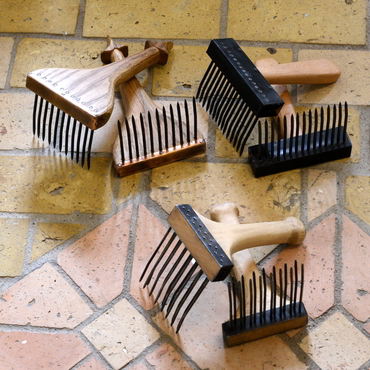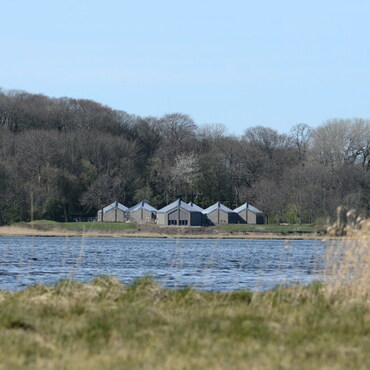At the beginning of May, we watched our wool's producers getting sheared. We hand-picked the fleeces and learned some of the sheep's names, like "Lotte" and "Doofi". Some wool is dark brown with white streaks in it, some is of different colours and some is white. The sheep race is not Nordic, but from Northern Germany: "Ostfriesisches Milchschaf". But this doesn't really matter, since we think that it is important to support your local sheep. The fleeces are rich in hair, with not so much wool and it is easy to comb and spin them. We saw with our own eyes and felt with our own hands the different wool quality, depending on the sheep and the place on the sheep's body. One can imagine how people in the Early Medieval hand-picked their sheep as well and how the shepherds which could provide higher quality wool made better profit.
We then rinsed the fleeces with cold water. The water soon turned into a greyish-brown (yummi) - sheepy-smelling nutrients for the woad plants! After drying, Vil pulled the wool apart so that straw and other "things" could fall out and he did most of the combing as well. Ása sat down for spinning; yarn after yarn after yarn. This process is still going on and won't end so quickly...
A few weeks later, the Epochenfest in Jülich came. This year we camped next to our friends from Dreki Herflokka. The hooks Vil had made from old Christmas Trees proved to be handy, because now we can put many yarns on them, which leaves much more space on the table. Space we need, amongst other things, for the new wool combs Vil is constantly making. We traded a pair for a deer hide (which sounds like something the people in Skandinavia would have done), so this gap has to be filled with a new one - and many more. We are sure that there will be people in Denmark in need of wool combs. Vil is trying some new comb shapes as well, always experimenting, dancing along the scarce evidence we have. But during the Epochenfest, between hours in the hot sun, beer, mead, wine and laughter, he found the time to carve a hook of a special shape. It is of a wooden Freyr, but if you turn it upside down, you see a bird with a long beak and a Thor's hammer at the bottom.
The wood working continued with some smaller artifacts like eye-drills and nalbinding-needles. The former are something Vil realized he should have made a long time ago because so many things look so much better with small black circles. We know that the Vikings used them extensively. Although wooden artifacts are rare, there is a lot of evidence for this decoration on e.g. bone combs and bone needle cases. The latter Vil made from different woods, most of it yew, and took the main inspiration from Hedeby finds.
Lacking the means to present the nalbinding needles on our table in a pretty manner without them getting lost so easily, Ása took some leftover twill fabric in orange and dark green and made a nice needle map. The border is decorated with three dark green threads overcast with an orange one, which were then braided into some kind of flat cord. The map with the needles can be wrapped up and bound together with the cord, securing the needles for transport.
And finally, Ása took some dark green and yellow thread and her ten tablets and tried tablet weaving. The tablets' edges are a hint too sharp, so the warp tore quite often, but it wasn't long until the first regular pattern appeared. Tablet weaving is like a whole new book which would have to be opened and because time's precious and there are many projects still unfinished, Ása decided to only skip through the pages and leave it be for the moment. Still, the first short band turned out to be pretty and she is quite proud of it.
